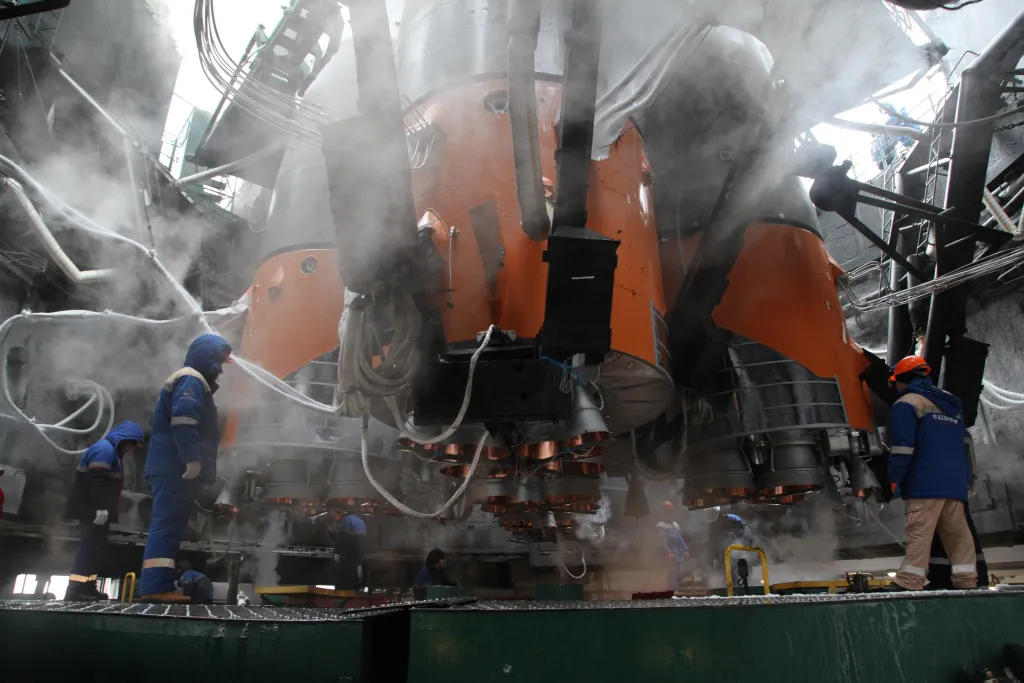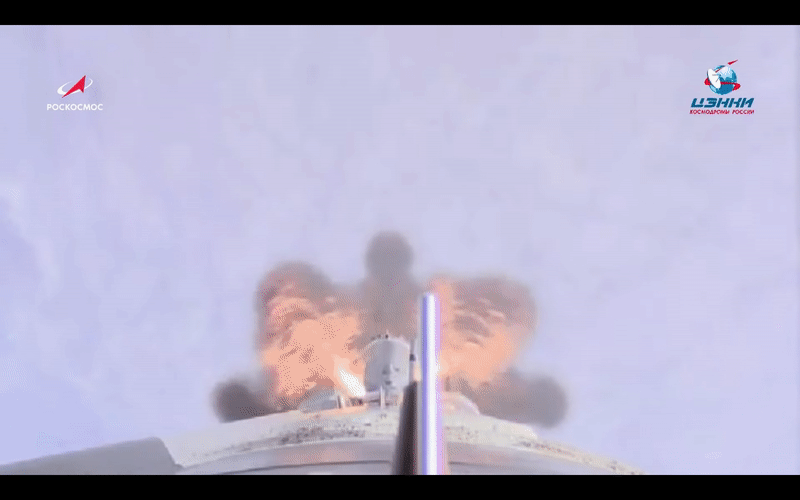Featured image credit: ROSCOSMOS/Yuzhny Space Center
Lift Off Time | June 25, 2021 – 19:00 UTC | 22:00 MSK |
|---|---|
Mission Name | Pion-NKS No. 1, a military satellite for the Liana constellation |
Launch Provider | Russian Federal Space Agency |
Customer | Russian Space Forces |
Rocket | Soyuz 2.1b |
Launch Location | Plesetsk Cosmodrome, Russia |
Payload mass | ~6,500 kg (14,330 Ib) |
Where is/are the satellite(s) going? | ~500 km Sun-Synchronous orbit (SSO) |
Will they be attempting to recover the first stage? | No, this is not a capability of Soyuz |
Where will the first stage land? | It will crash on the land of Ust-Tsilemsky District, Komi Republic |
Will they be attempting to recover the fairings? | No, this is not a capability of Soyuz |
Are these fairings new? | Yes |
How’s the weather looking? | TBD |
This will be the: | – 1st launch of the Pion-NKS military satellite – 6th launch of a satellite for the Liana surveillance system – 63rd launch of Soyuz 2.1b – 58th orbital launch attempt of 2021 |
Where to watch | If available, a livestream will be listed here |
What does all this mean?
The Russian Federal Space Agency will launch the Pion-NKS No. 1 (14F139) satellite on a Soyuz 2.1b launch vehicle into a Sun-synchronous orbit. The rocket will lift off from the Plesetsk Cosmodrome, in Russia. This mission will mark the first of two launches of the Pion-NKS satellites for the Liana electronic intelligence (ELINT) constellation.
Pion-NKS No. 1 Mission
Liana Constellation
Liana is a new Russian military surveillance constellation that will consist of two series of satellites: Lotos-S1 and Pion-NKS. Both of them are intended to gather data on foreign military forces located on the ground, on water, and in the air. However, they work a little bit differently, Lotos-S1 has a passive radar system, whereas Pion-NKS has an active one.
Liana is the successor of the Soviet reconnaissance system Legenda-Tselina that was also used for target designation and guidance of high-precision weapons. One of its components, active satellites US-A, had such a powerful radar that it had to be equipped with a nuclear reactor. Only this type of source could provide the system with enough energy. This caused an international scandal in January 1978, when, during an emergency deorbiting of the satellite, radioactive debris crashed and contaminated over a 124,000 square kilometer area of the Northwest Territories in Canada. As a result, the Liana constellation will not use nuclear energy as a power source.
As of today, only Lotos-S satellites have already been deployed into orbit (1 Lotos-S and 4 Lotos-S1, which is a modernized iteration of Lotos-S). The latest launch of Lotos-S1 took place in February 2021.
Pion-NKS No. 1 satellite
Due to the classified nature of this mission, very little is known about the characteristics of the Pion-NKS satellite, however, its purpose is far from a secret. Pion-NKS is a military reconnaissance satellite. Its model was first presented to the public in 2017, at the naval showcase in Saint-Petersburg. The main aim of this satellite is surveillance of foreign military forces.

According to Russian media sources, Pion-NKS will be able to detect small objects like cars of potential enemy forces in real-time. By receiving and analyzing radio signals, this satellite will help to understand what type of military equipment was detected and provide its coordinates. In contrast, the Lotos-S1 series of satellites are specialized in the interception of different information, including communications.
What is Soyuz 2.1b?
ROSCOSMOS’s Soyuz is a multi-use medium-lift launch vehicle that was introduced in far 1966 and since then has been the workhorse of the Soviet/Russian space program. It is capable to launch civilian and military satellites, as well as cargo and crewed missions to the ISS. Over the decades, several variants of the Soyuz rocket have been developed. Soyuz 2.1b is one of its latest iterations that belongs to the Soyuz-2 rocket family.

The rocket consists of three stages, all of them are expendable. When launching to the ISS, Soyuz-2 can be flown with either a Progress capsule or a Soyuz spacecraft.
Soyuz 2.1b is about 46.3 meters (152 ft) in height and 2.95 meters (9 feet) in diameter. The vehicle’s total lift-off mass is approximately 312,000 kg (688,000 lb). The rocket’s payload lift capacity to low-Earth orbit (LEO) is between 6,600 and 7,400 kg depending on the launch site.
Stages
| First Stage | Second Stage | Third Stage | |
| Engine | 4 RD-107A | RD-108A | RD-0124 |
| Total Thrust | 840 kN (188,720 lbf), sea level 1,020 kN (229,290 lbf), vacuum | 792 kN (178,140 lbf), sea level 922 kN (207,240 lbf), vacuum | 294 kN (66,094 lbf), vacuum |
| Specific Impulse (ISP) | 263 s, sea level 320 s, vacuum | 258 s, sea level 321 s, vacuum | 359 s, vacuum |
Side Boosters
The first stage of the Soyuz 2.1b rocket is composed of 4 side boosters that are powered by RD-107A engines. Each one of the boosters has a conical shape and a dry weight of 3,784 kg. It is approximately 19.6 meters in length, with a diameter of 2.7 meters. Each side booster has two vernier thrusters that are used for flight control.
The RD-107A engine runs on rocket-grade kerosene (RP-1) and liquid oxygen (LOx). The propellants are stored in the pressurized aluminum alloy tanks, the kerosene tank is located in the cylindrical part of the booster, and the LOx one is in the conical section. Each one of those engines have 4 combustion chambers and together they are capable of producing a thrust of 840 kN at sea level and 1,020 kN in a vacuum.

Perhaps, the most spectacular moment of the Soyuz-2 rocket’s launch is the separation of the first stage. It happens approximately 2 minutes after the launch. The boosters perform a pattern, known as the “Korolev cross” (named after Sergei Korolev, a very important figure of the USSR space program and history).
Second and Third Stages
The center core stage is powered by a single RD-108A engine, and the upper stage is fitted with a single RD-0124 engine. Both of these engines run on RP-1 and LOx and have 4 combustion chambers. The second stage is 27.1 meters long, with a diameter of 2.95 meters, and a dry mass of 6,545 kg. It has 4 vernier thrusters for three-axis flight control.
The third stage of a Soyuz-2 rocket has a height of 6.7 meters, a diameter of 2.7 meters, and a dry mass of 2,355 kg. One interesting thing about the RD-0124 engine on this stage is that it starts its ignition sequence prior to stage separation. This process is called “hot fire staging”.






